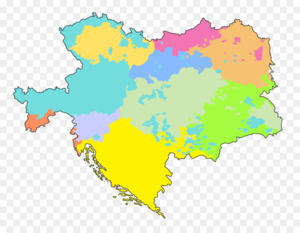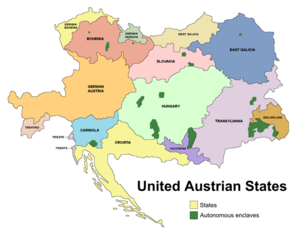Verse:Eastern Galicia
Eastern Galicia, or Eastern Halychyna (Ukrainian: Східна Галичина) is a geographical region in modern Western Ukraine (present day oblasts of Lwiw, Stanislaw and Ternopil) and Podkarpackie Voivodeship of Poland. Galicia was formed within the Austrian Empire during the years 1772–1918 and became a state of the United Austrian States in 1906.
History
Before the dissolution of Austria-Hungary
Kingdom of Galicia and Lodomeria (also known as Galicia or Austrian Poland), was established in 1772 as a crownland of the Habsburg Monarchy as a result of the First Partition of Poland. The name "Galicia" is the Latinized form of Halycz, a principality of the medieval Ruthenia, which itself derives from the Ruthenian word halka which means "crow".
the United Austrian States period
Austria-Hungary was a multi-ethnic country, which often resulted in various conflicts between different ethnic groups within it. In 1906 the dual monarchy was replaced with with a federation of fifteen states. In addition, a number of mostly German-speaking enclaves and large multiethnic cities (such as Prague, Budapest, Lwiw, and others) received an autonomy within the respective territory.
No country of the Austrian monarchy had such a varied ethnic mix as Galicia: Poles, Ruthenians, Germans, Armenians, Jews, etc. The Poles were mainly in the west (which was called Western Galicia), with the Ruthenians predominant in the eastern region (Ruthenia or Eastern Galicia), while other ethnicities were distibuted almost equally between those two parts. A clear distinction was also in religious denominations: the majority of the Poles were Latin Catholics, while the Ruthenians were mostly Greek Catholics. Thus the Kingdom of Galicia was divided into two parts in 1906: West and East with the city of Lemberg (modern day Lwiw) becoming an autonomous district that belonged to both parts.
After WWI
The United Austrian States was defeated by the Allies of World War I. The peace agreement between the it and the Allies resulted in the country breaking into different independent states. East Galicia also became independent in 1918, however the period of independence was brief (from 1918 to 1921) after which it became a part Poland.

